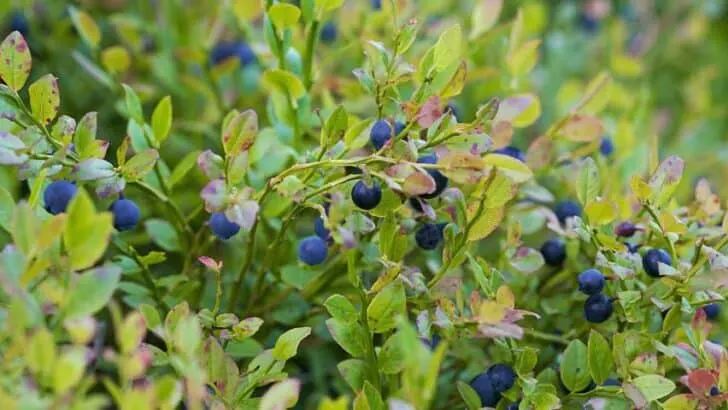This article will reveal great information about the best plant companions for blueberries. I am growing multiple blueberry bushes in my garden.
The blueberry is a woody shrub. According to the Southern Appalachian Botanical Society, it belongs to the Vaccinium genus. it is a perennial highbush that grows for multiple years.
I have tried different plants to grow well along with them. Not all of the companion plants worked!
Select companion plants that grow in the same environment to strengthen your blueberry shrub. Do not choose plants competing with blueberry plants for space or resources.
For the blueberry plant, choose companion plants that like acidic soil with a soil pH of around 4.5. Choose plants that attract pollinators in the spring to help blueberries propagate.
Table of Contents
Blueberry Companion Plants
The best blueberry companion plants are:
- Borage
- Thyme
- Strawberry
- Rhododendron
- Fern
- Lilac
- Hydrangea
- Sage
- Comfrey
- Dill
- Parsley
- Oak Trees
- Pine Trees
- Holly
- Mountain Laurel
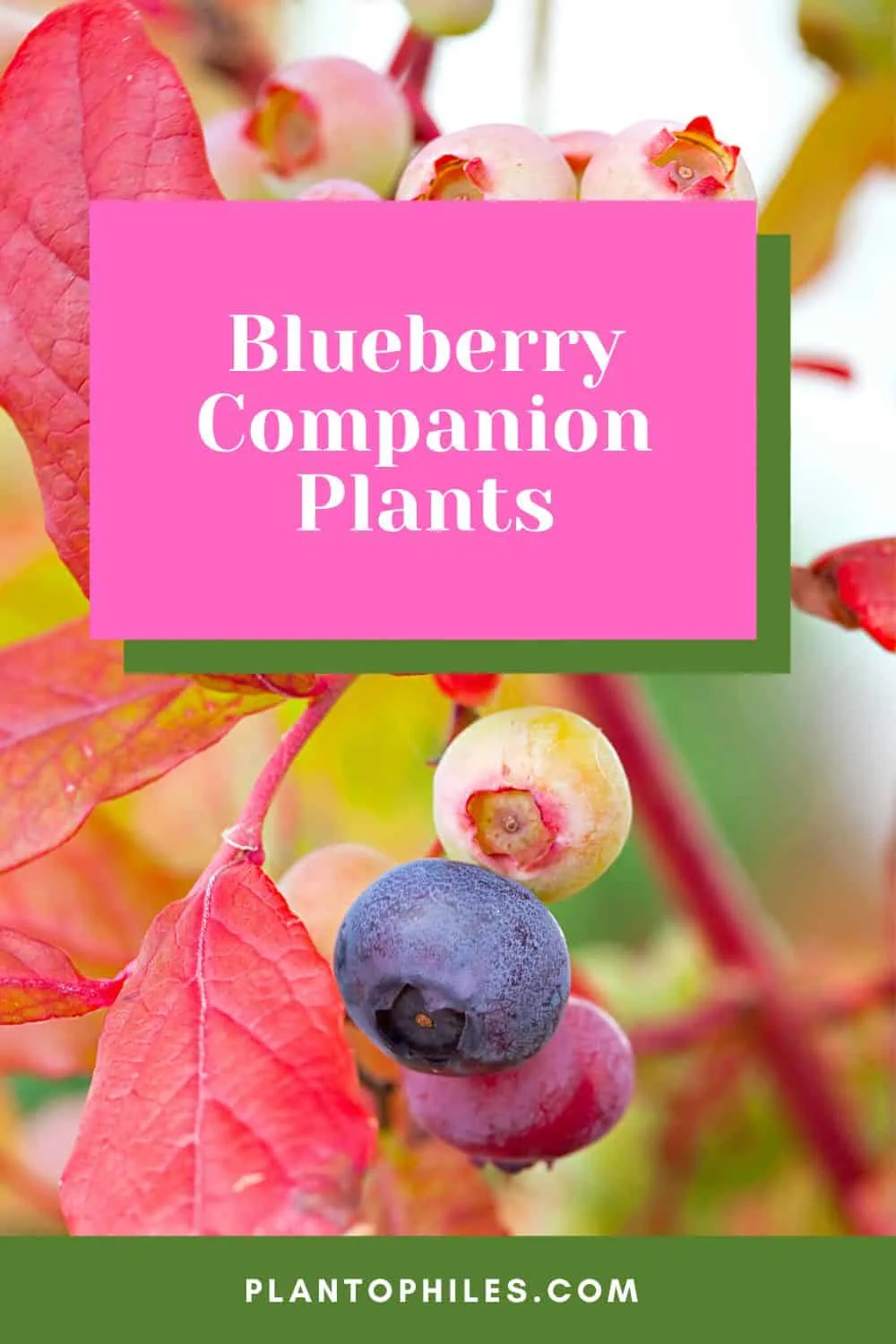
15 Best Companion Plants for Blueberries
These are the plants that many gardeners plant with blueberries:
1. Borage
This beautiful blue flower is a perfect complement to your berry patch. It helps to attract the exact types of pollinators that blueberries need and deposits nutrients in the soil that help blueberries thrive.
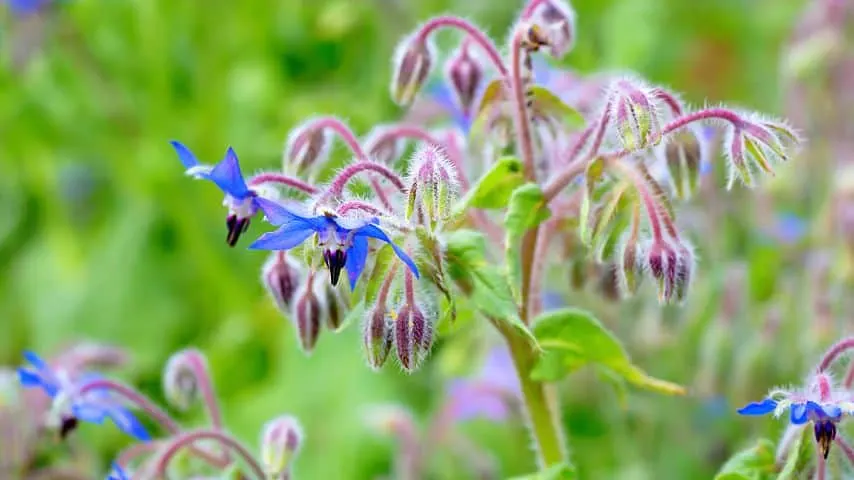
Planting borage alongside blueberries can even improve their taste. This is why borage is one of the best blueberry companion plants.
Why Plant Borage with Blueberries
- Attracts pollinators
- Deposits nutrients in the soil
2. Thyme
Thyme belongs to the Lamiaceae family. This fragrant is native to the Mediterranean.
This herb is excellent in your kitchen, but it can also protect blueberries as a ground cover that doubles as a pest repellent. Some insects that love to feed on ripe blueberries also hate the presence of thyme.
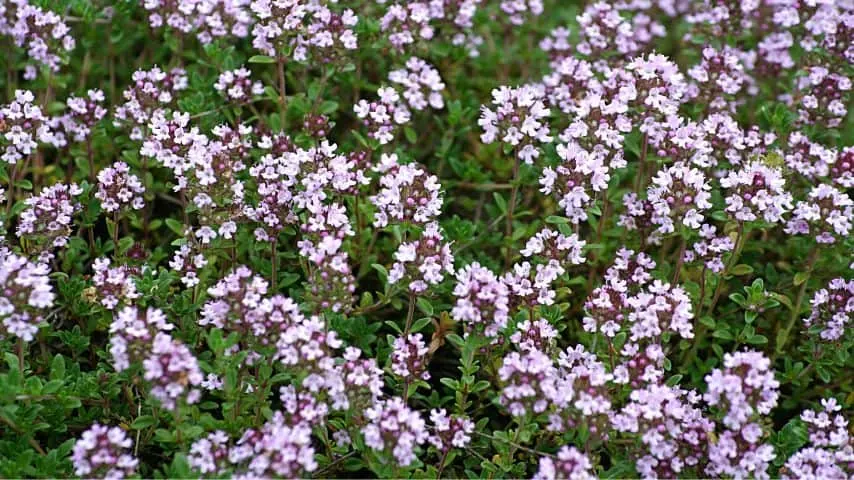
Thyme and blueberries are a great combination and excellent companion plants.
Why Plant Thyme with Blueberries
- Ground cover
- Repels Pests
3. Strawberry
Growing two of the most delicious berries in the same garden makes sense for many reasons. Strawberry plants love acidic soil as blueberries. However, they prefer it just a bit more alkaline.
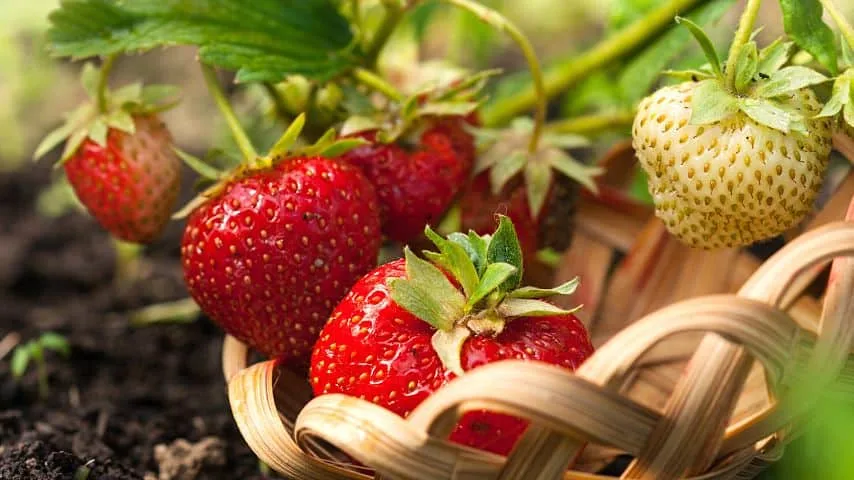
It’s fun to have different types of berries in your garden. But keep in mind that plants need a lot of nutrients and water to produce delicious fruit.
Separate strawberries and blueberries by at least a few feet. Ensure they are not competing for resources and space. Both of these plants require space.
Why Plant Strawberries with Blueberries
- Similar soil needs (acidic soil)
4. Rhododendron
These beautiful flowers are a great match for blueberries. They bloom in the spring, like blueberries, attracting the same important pollinators.
Rhododendrons love the kind of acidic soil that blueberries thrive in, but they require a little more shade like on a porch.

If your garden includes pine trees, you might want to plant Rhododendrons underneath them to relieve them from direct sunlight.
Why Plant Rhododendrons with Blueberries
- Attract pollinators
- Acid-loving plants
5. Fern
Ferns provide more lush green to your garden and can grow well in the same kind of conditions as blueberries, albeit with a lot more shade.
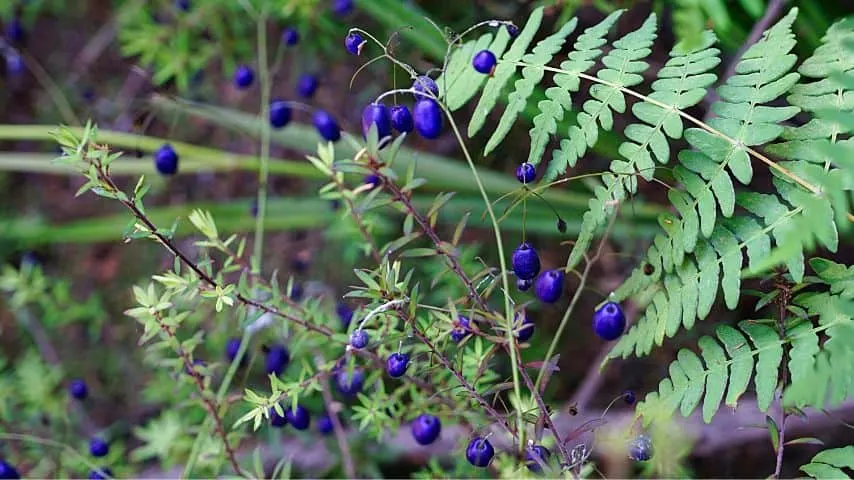
Plant ferns underneath evergreen trees or shadowed areas, and reserve the sunniest spots for your blueberries.
Why Plant Fern with Blueberries
- Prefer shaded areas and do not compete for light
- Same needs
6. Lilac
Add some color to your garden with lilacs, which come in pink, white, and purple.
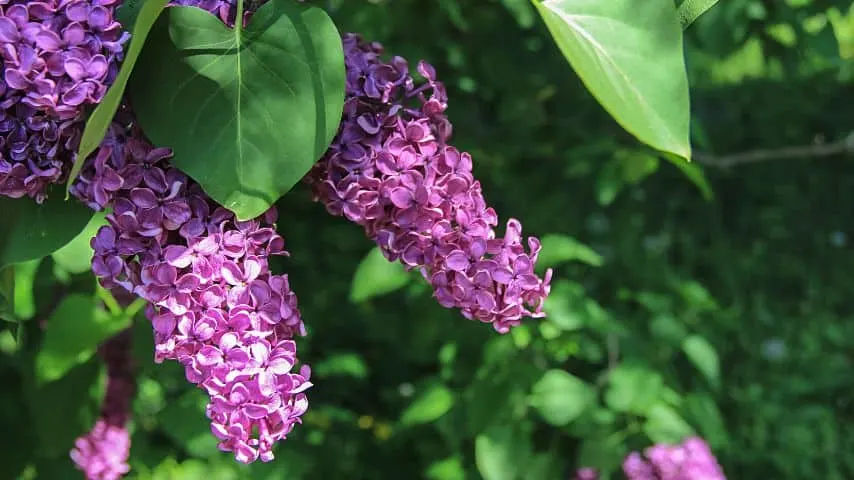
Lilac shrubs are easy to grow and beautiful, with the added benefit that pollinators love them! Just be careful to trim them — lilac can grow more than 10 feet tall and block the sunlight you want to get to your blueberries.
Why Plant Lilac with Blueberries
- Adds color
- Attracts pollinators
7. Hydrangea
These flowers are a great companion to blueberries and can ensure that the beauty in your garden lives on after your blueberry patch has gone dormant.
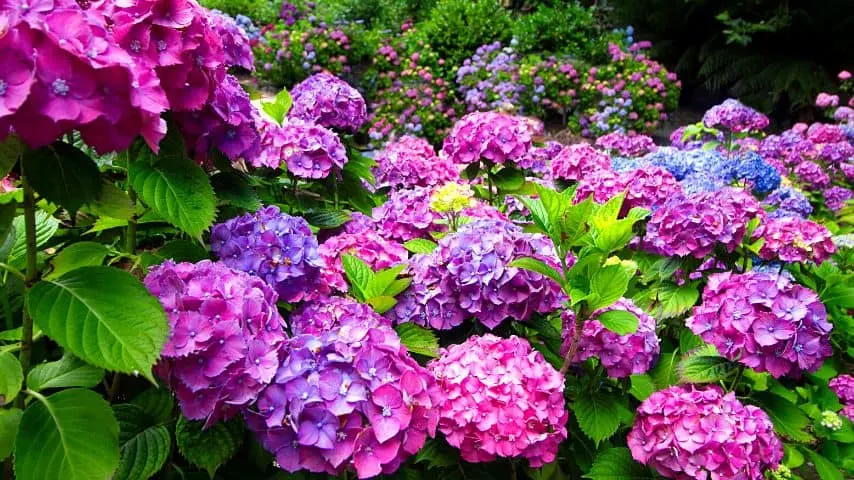
Hydrangeas bloom as blueberries go out of season. These flowers don’t need as much sun as blueberries. Plant them in a shadier section.
Why Plant Hydrangea with Blueberries
- Adds color
- Attracts pollinators
8. Sage
This lovely-smelling herb sage is very versatile and hardy. It will grow in acidic as well as alkaline soil. It grows well alongside blueberries.
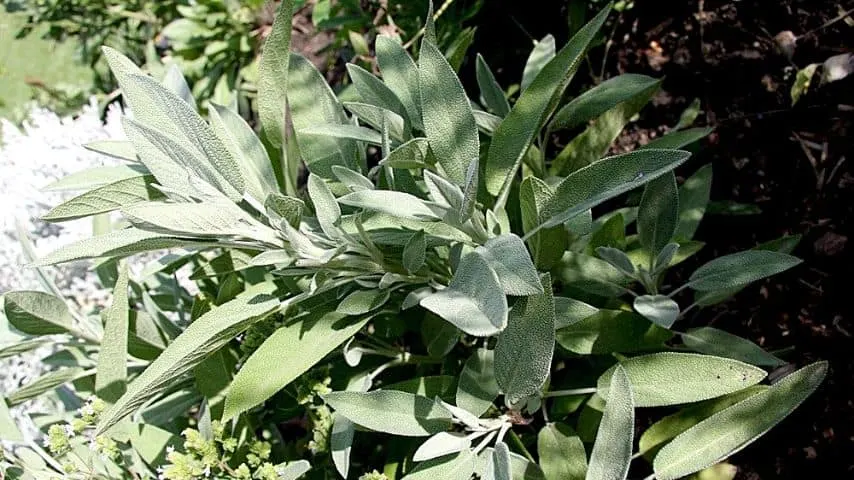
Some of the best pollinators love sage, while some of the worst pests for blueberries, including black flea beetles, hate it. You can burn sage in your home for a pleasant smell that some say cleanses the air of pollen and mold spores.
Why Plant Sage with Blueberries
- Great pollinator
- Grows in various soil types
9. Comfrey
This beautiful and beneficial flower is an excellent companion to blueberry bushes because it contributes vital nitrogen to the soil through its roots.
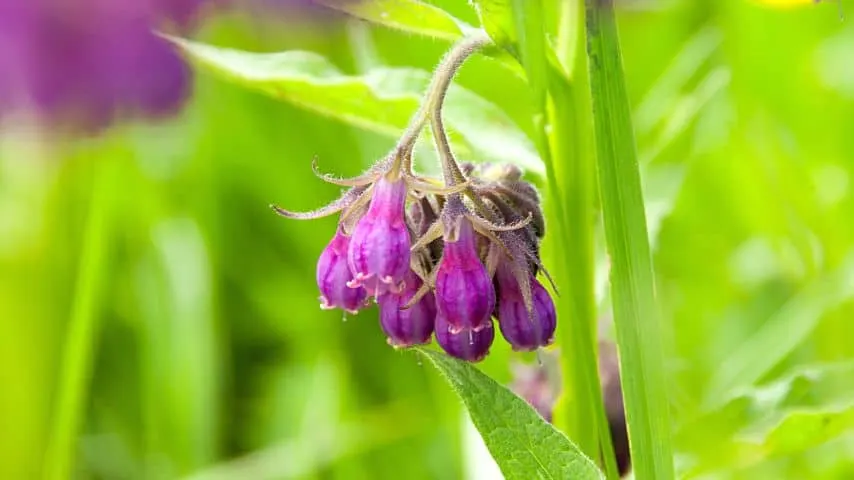
Comfrey can spread quickly and compete with other plants for resources.
Why Plant Comfrey with Blueberries
- Adds nitrogen to the soil
10. Dill
This herb is perfect for your blueberry garden. It is a delicious fresh flavor that you can add to your cooking.
It also attracts insects like ladybugs and protects blueberries by preying on pests. Aphids hate dill.
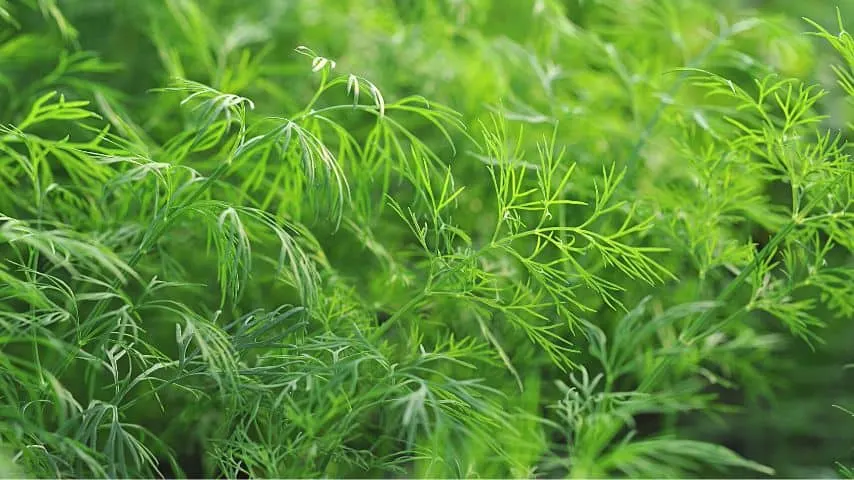
Additionally, it is drought resistant and doesn’t need much water, so you can trust it not to make your blueberries thirsty.
Why Plant Dill with Blueberries
- Attracts beneficial insects
- Repels plant pests
- It does not need much water
11. Parsley
Acidic soil is no problem for parsley, which grows easily in the conditions best for blueberries. It’s a great garnish and a perfect companion plant.
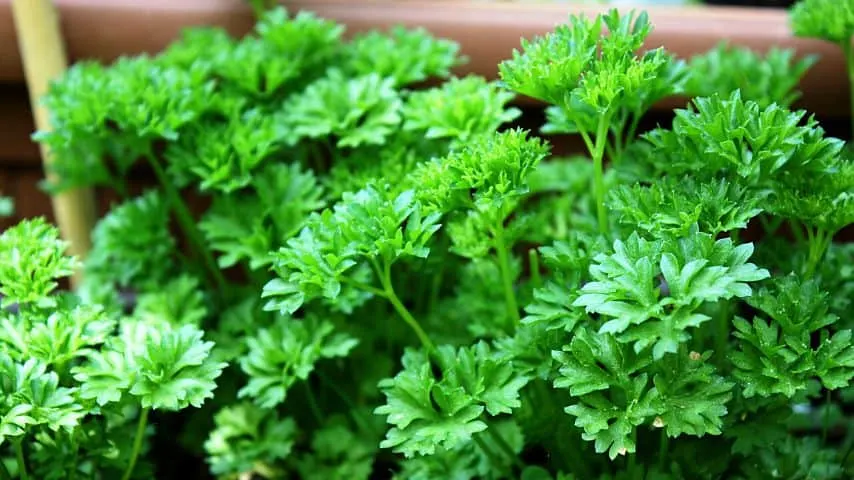
When you have so many flowers, it’s nice to add a bit of extra ground-level greenery.
Why Plant Parsley with Blueberries
- Tolerate acidic soil
- Adds greenery to the patch
12. Oak Trees
If you have a small garden, you are probably not thinking about planting oak trees alongside your blueberry patch. However, these can support blueberry bushes if you have the room (or some pre-existing oak trees to plant around).
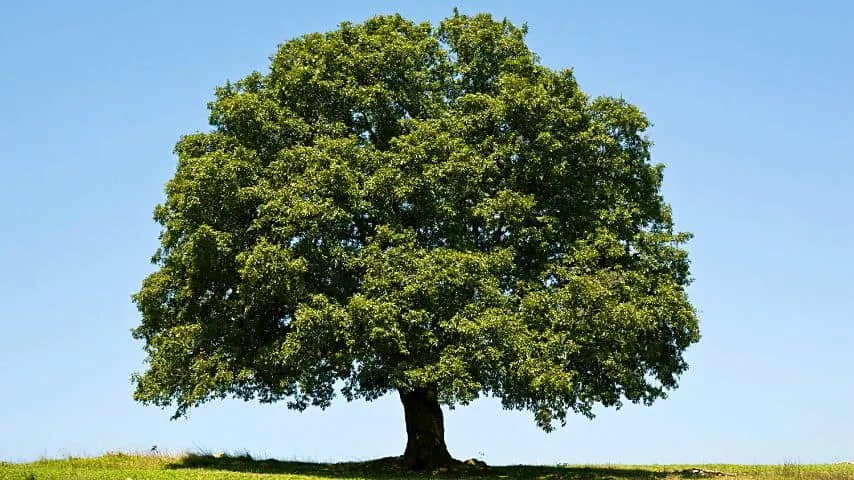
Blueberries and oak trees both like temperate climates and acidic soil. The root network that large oat trees establish retains water, providing more moisture for them to draw on, and falling leaves act as mulch and fertilizer.
Why Plant Oak Trees with Blueberries
- Also prefers temperate climates
- Retains water in the soil
- Provides mulch from falling leaves
13. Pine Trees
Blueberries can be a great understory crop for pine trees, which love the same kind of acidic soil and can help prevent pests. Falling pine needles can make a kind of protective mulch that inhibits weeds.
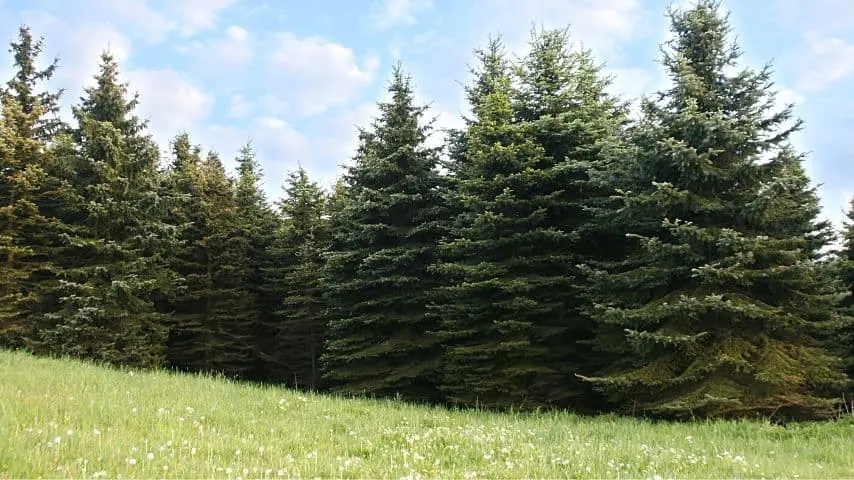
However, blueberries require a lot of light, so ensure they have enough space so they don’t get completely overshadowed.
Why Plant Pine Trees with Blueberries
- Love acidic soil
- Prevents pests
14. Holly
As an evergreen shrub, holly is a great addition to gardens in temperate climates. They flower during the winter when blueberries are dormant.
Holly benefits from acidic soil with plenty of moisture. Holly berries are toxic and inedible for both people and pets.
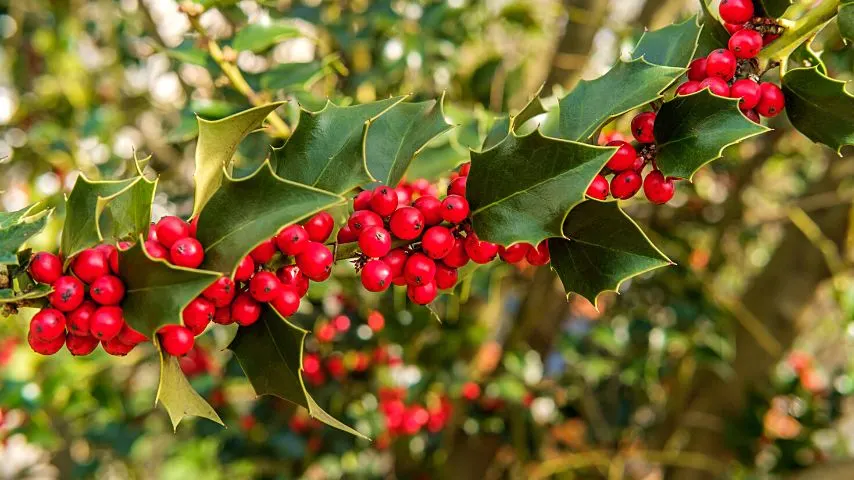
Why Plant Holly with Blueberries
- Repels insects
- Flower in winter when blueberries are dormant
15. Mountain Laurel
The beautiful flowers of these resilient and beginner-friendly shrubs look great with blueberry bushes and enjoy the same conditions.
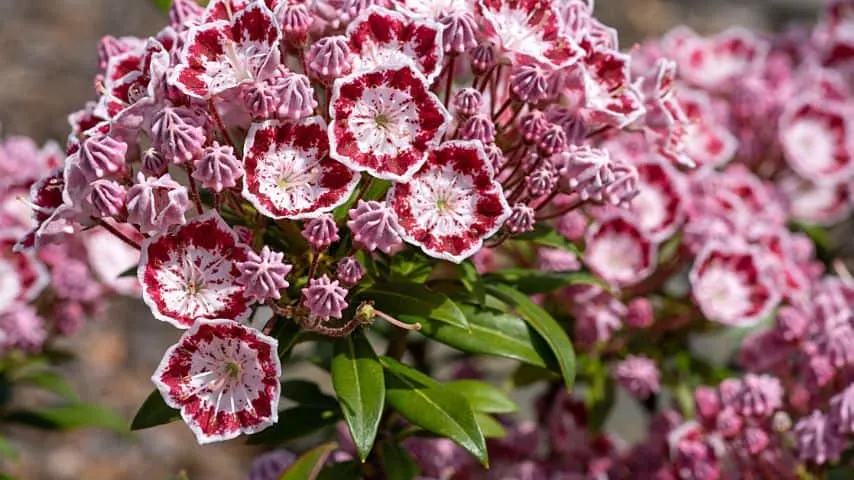
For aesthetic reasons alone, consider planting some mountain laurel alongside blueberry bushes in your garden.
Why Plant Mountain Laurel with Blueberries
- Easy to care for
- Thrive in similar conditions to blueberries
- Look great alongside blueberry bushes
Planting Blueberries
Blueberries need full sun to grow. They thrive in acid soil with a ph of 4.5. The soil needs to be well-draining and high in organic matter.
Peat, pine, bark sand, and peat moss are great soil additions. Fertilize monthly using an acid-forming fertilizer that blueberries like.
Rhododendron or Azalea mixes with an NPK of 20-10-20 are best. Blueberries are light feeders.
Plant blueberries in containers or in high ground. They are sensitive to frost, according to Tennessee State University.
Water until they are fully saturated.
Blueberry Plant Varieties
Popular blueberry cultivars for gardeners are:
- Northern and southern highbush blueberry hybrids: This berry is available in the US as a cultivar name “Legacy.” Grows 6-7 feet tall (1.80-2.10m).
- Rabbiteye blueberries: Native to the Southeastern US.Grows up to 9 feet (2.7m)
- Lowbush blueberry: Native in Maine and Canada. Grows only 1 foot tall (30cm). Berry yield is low.
Benefits of Growing Companion Plants with Blueberry
The benefits of growing other plants around blueberry plants:
- Group plants with similar soil needs
- You can add plants that add soil nutrients
- Some plants will cover the ground and protect blueberries
- Add plants to attract pollinators
- A plant that repels insects makes a good companion plant
Cornell University recommends planting cover crops. They help to increase organic matter and improve the soil structure. They also prevent weeds from growing.
Popular cover crops include Buckwheat, Annual Field Brome, Marigolds, and grasses such as Ryegrass.
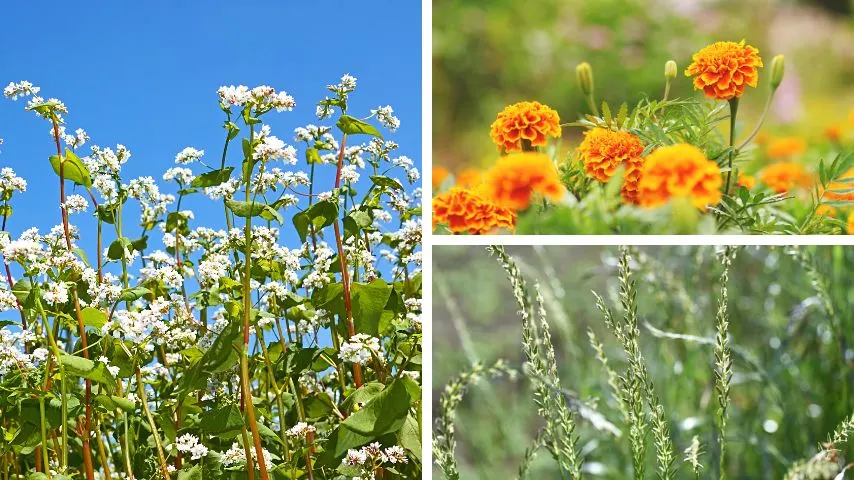
What to Avoid When Growing Plants with Blueberries
Avoid planting plants near your blueberry that will compete for space. Ensure ample space around the blueberry plant.
Good companion plants to grow with these high berries are plants with similar soil and temperature needs.
This is also why you should not grow raspberries and blueberries together. They require different soil acidity.
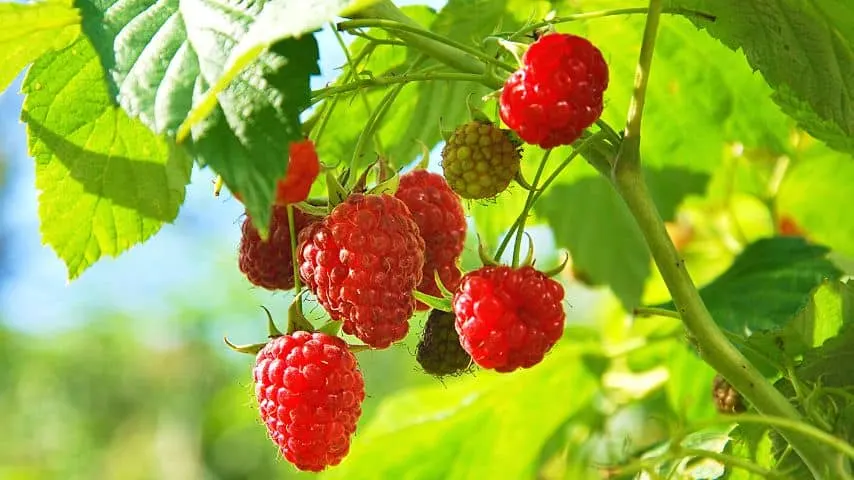
Avoid plants that deprive the soil of nutrients such as micronutrients, Nitrogen, Potassium, and Phosphorus (NPK). Berry plants are nutrient-hungry.
Avoid these Plants Near Blueberries
Some plants don’t make great blueberry companion plants. The reason is that they either prefer nonalkaline soils or lots of nutrients. Or both.
A list of plants you should not be growing with blueberries are:
- Kale
- Tomatoes
- Peas
- Potatoes
- Lettuce
- Melons
- Beans
- Cabbage
- Brussels Sprouts
- Cauliflowers
- Peppers
Read the Spanish Broom growing guide next.
Frequently Asked Questions about Blueberry Companion Plants
Where Should Your Blueberry Bushes Best Be Planted?
You need a location with plenty of direct sunlight, loose, acidic soil with good drainage, and cleared of weeds and invasive plants. You might also consider selecting a spot next to pine trees or oak trees, which can protect them and provide other benefits.
What Should Not Be Planted Near Blueberries?
Any plant that requires alkaline soil will not grow well with blueberries. Leave space between blueberries and other nutrient-hungry plants, like strawberries, nightshades (like tomatoes), melons, beans, peas, or greens.
Growing Companions for Blueberries
You can protect and encourage blueberries by selecting plants that attract pollinators. Some plants attract beneficial insects. And some companion plants repel pests or protect blueberries. The best companion plants include borage, thyme, strawberry, rhododendron, fern, lilac, hydrangea, sage, comfrey, dill, parsley, oak, pine trees, holly, and mountain laurel.

Daniel has been a plant enthusiast for over 20 years. He owns hundreds of houseplants and prepares for the chili growing seasons yearly with great anticipation. His favorite plants are plant species in the Araceae family, such as Monstera, Philodendron, and Anthurium. He also loves gardening and is growing hot peppers, tomatoes, and many more vegetables.

